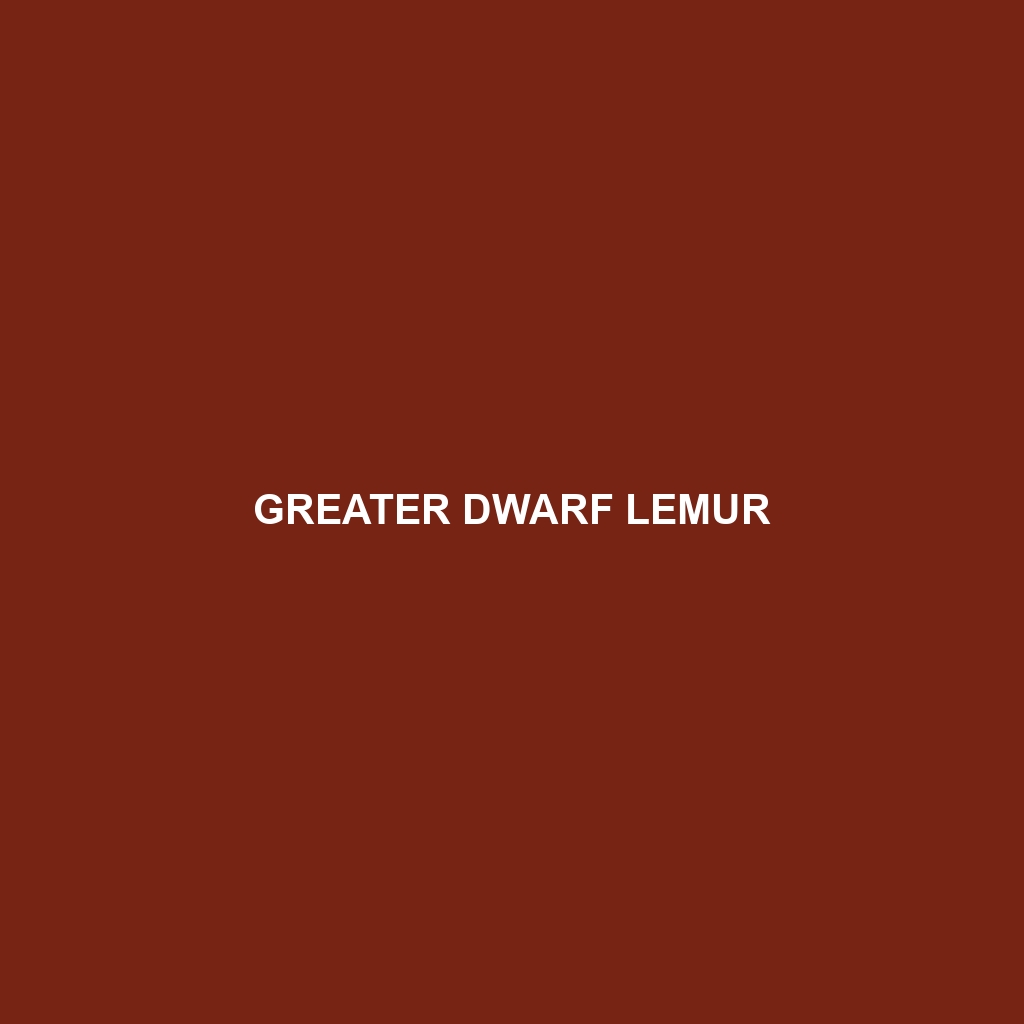Greater Dwarf Lemur
Common Name: Greater Dwarf Lemur
Scientific Name: Cheirogaleus major
Habitat
The Greater Dwarf Lemur is primarily found in the dense rainforests of Madagascar. This species thrives in lowland tropical forests and is often spotted in areas with a rich understory that provides ample cover and food sources. Their geographical distribution includes various parts of eastern Madagascar, where they prefer moist and humid environments that facilitate their arboreal lifestyle.
Physical Characteristics
The Greater Dwarf Lemur is a small primate, averaging about 1 to 1.5 feet in length, including its tail. It generally weighs between 2 to 3 pounds. Its coat is typically gray or brown, with a lighter underbelly, and is adorned with a unique pattern that aids in camouflage among the foliage. Notable features include large, bright eyes that enhance its nocturnal vision and wide, flat feet that help in gripping branches. Their bushy tails are not only used for balance but also for communication.
Behavior
This species is primarily nocturnal, exhibiting behavior patterns adapted for nighttime activity. The Greater Dwarf Lemur is known for its social structure, often living in small family groups that communicate through a series of vocalizations and scent markings. They are adept climbers, navigating through trees with agility, and display playful tendencies, especially among the young. Their nocturnal lifestyle involves not just foraging but also engaging in social grooming, which strengthens group bonds.
Diet
The Greater Dwarf Lemur primarily feeds on fruits, leaves, and flowers, with a particular preference for soft, ripe fruits and nectar. Their diet is rich in sugars and proteins, necessary for their energy needs. During the dry season, they may rely more heavily on tree gums and saps, showcasing their adaptability in food sourcing. Their specific feeding habits contribute to seed dispersal, playing an essential role in the growth of their habitat.
Reproduction
Breeding typically occurs during Madagascar’s rainy season, between December and March. After a gestation period of approximately 60 to 70 days, females give birth to one or two offspring. Greater Dwarf Lemurs are attentive mothers, caring for their young closely during the early months of life. The young begin to explore their surroundings shortly after birth, helping them adapt to the arboreal environment.
Conservation Status
The Greater Dwarf Lemur is currently listed as vulnerable on the IUCN Red List due to habitat loss caused by deforestation and human activities. Their numbers are declining, with conservation efforts focusing on habitat protection and restoration in Madagascar.
Interesting Facts
Did you know that the Greater Dwarf Lemur is one of the few lemurs that enter a state of torpor or hibernation during the dry season? This energy-conserving behavior allows them to survive when food is scarce. Additionally, they have a unique method of hibernation; they can lower their body temperature significantly, further conserving energy.
Role in Ecosystem
As a crucial part of Madagascar’s ecosystem, the Greater Dwarf Lemur plays a significant role in seed dispersal, aiding in the propagation of various plant species. Their feeding habits help maintain the health of the rainforest by promoting biodiversity. Additionally, they serve as prey for larger predators, thus contributing to the food web dynamics within their habitat.
